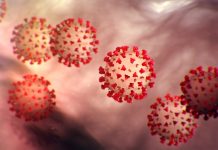Diabetes mellitus is a chronic problem that influences countless people worldwide. It is characterized by high levels of blood sugar level, or glucose, which can cause numerous health and wellness difficulties if not correctly handled. There are various sorts of diabetic issues, with one of the most common being type 1 and also type 2. While both types share resemblances in regards to symptoms and therapy, they vary considerably in their causes, onset, and also management. Recognizing the differences between kind 1 and type 2 diabetic issues is critical for exact medical diagnosis as well as effective monitoring of the problem.
Type 1 Diabetes Mellitus: The Duty of Autoimmunity
Kind 1 diabetes mellitus, also called insulin-dependent diabetic issues or juvenile onset diabetes, is an autoimmune disease that normally establishes in childhood years or adolescence. It occurs when the body immune system incorrectly assaults and also damages the insulin-producing cells in the pancreas. Because of this, the body is incapable to generate enough quantities of insulin, a hormonal agent required for regulating blood sugar level levels.
Individuals with kind 1 diabetes mellitus are completely depending on insulin injections or an insulin pump to regulate their blood sugar levels. Without appropriate insulin management, their blood glucose degrees can end up being alarmingly high, leading to diabetic person ketoacidosis (DKA), a lethal problem.
Typical signs of type 1 diabetic issues include extreme thirst, constant peeing, unusual fat burning, consistent hunger, and fatigue. The onset of type 1 diabetes mellitus is usually quick as well as can be set off by hereditary elements or environmental triggers such as viral infections.
- Autoimmune illness
- Insulin-dependent diabetic issues
- Develops in childhood years or adolescence
- Immune system strikes insulin-producing cells
- Rely upon insulin shots or artroflex price pump
Type 2 Diabetic Issues: Insulin Resistance and also Lifestyle Factors
Type 2 diabetes, additionally described as non-insulin-dependent diabetic issues or adult-onset diabetes, is the most prevalent kind of diabetic issues, making up approximately 90-95% of all situations. Unlike type 1 diabetic issues, type 2 happens when the body comes to be immune to the impacts of insulin or falls short to produce enough insulin to maintain normal blood sugar levels.
Numerous elements add to the growth of type 2 diabetes, consisting of genetic proneness, weight problems, inactive lifestyle, bad diet, and advancing age. While kind 2 diabetes mellitus can happen at any kind of age, it is a lot more typically identified in the adult years, frequently after the age of 40.
Originally, people with type 2 diabetic issues might not experience obvious signs. As the condition idealis proceeds, signs might consist of regular urination, raised thirst, blurred vision, slow-moving injury recovery, and also prickling in the extremities.
The administration of type 2 diabetes mellitus usually includes lifestyle alterations such as regular physical activity, a healthy diet, weight loss if needed, as well as dental medicines or insulin treatment to manage blood sugar level levels. Unlike kind 1 diabetic issues, kind 2 diabetes is a modern condition, as well as some people might call for insulin therapy as the illness breakthroughs.
- Non-insulin-dependent diabetic issues
- More common in adults
- Insulin resistance or poor insulin production
- Linked to genes, obesity, inactive way of living, and also inadequate diet regimen
- Way of living modifications together with drugs
Resemblances and also Distinctions in Treatment
While the fundamental objective of therapy for both type 1 as well as kind 2 diabetes is to preserve blood glucose levels within a target variety, the methods employed differ based on the type of diabetes.
Kind 1 diabetic issues needs exogenous insulin, implying that people with this kind of diabetic issues need to routinely carry out insulin through injections or an insulin pump to manage their blood glucose degrees. Close monitoring of blood sugar degrees is necessary to readjust insulin dosages as necessary and also avoid issues.
Type 2 diabetic issues administration mostly concentrates on way of life alterations, consisting of a healthy and balanced diet, routine exercise, and also weight administration. Drugs may be recommended to enhance insulin level of sensitivity, stimulate insulin manufacturing, or prevent sugar manufacturing in the liver. In some cases, insulin shots or insulin pump therapy may be required if oral drugs do not sufficiently control blood sugar degrees.
Final thought
Type 1 and also type 2 diabetes may both include high blood glucose levels, however they are distinct problems with different causes, beginning, as well as administration methods. Type 1 diabetes stems from an autoimmune action and needs lifelong insulin therapy, while kind 2 diabetes mellitus is frequently pertaining to a combination of genetic and also lifestyle variables as well as can frequently be handled via way of life alterations and also medicines. Recognizing the one-of-a-kind qualities of each kind allows for exact medical diagnosis and also proper administration, enabling people to live a healthy as well as satisfying life in spite of their diabetes diagnosis.






